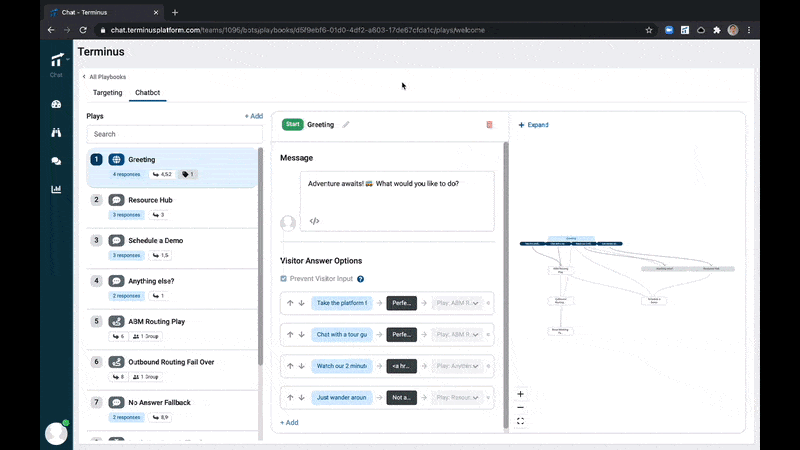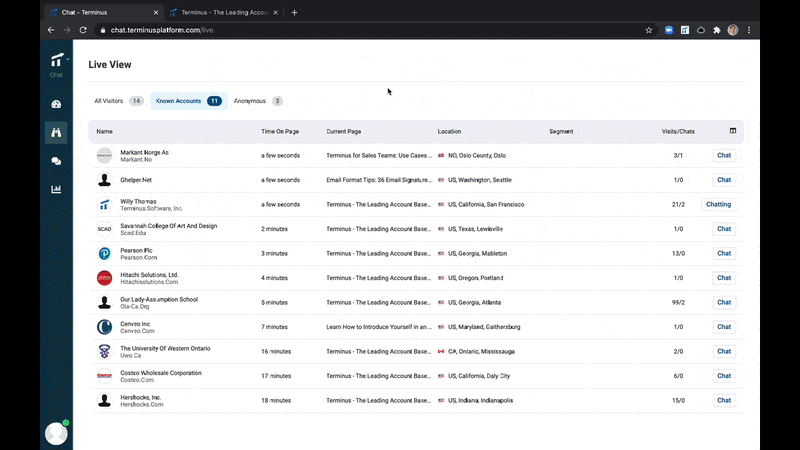Traditional marketers can get intimidated when writing for chat for the first time. It feels like a whole new landscape to learn. Once you gain a bit of confidence, though, you’ll have a world of new ways to engage your audience, push the envelope, and humanize your brand. We know today’s B2B buyers have high expectations. They want the same immediate and personal experiences that they’re accustomed to when buying online as a consumer.
So let’s not have conversational marketing (writing for chat) be intimidating. This article dives into how we can dispel some of that intimidation to make sure your team is comfortable with taking that first step and setting up your chatbots for the best possible engagement experience.
Conversational Marketing Is Content Marketing
The first piece of advice I would give is to treat conversational marketing as an extension of your content marketing strategy.
The biggest difference is when you shift to conversational you have a much smaller window to hook your audience and get them to take the action. Simultaneously, the biggest benefit to adding a bot to your site is capturing potential bounces when your on-page content isn’t securing conversions.
How can both be possible?
The nature of conversational marketing forces the copywriter to get right to the point.
One thing is going to be glaringly obvious… if you know your customer and you know their motivations and pain points then you’re going to be great at conversational marketing. If that is still a big question mark for your team then there’s a little bit of homework to do (use the resource below to get started).

My philosophy on chat is that the entire purpose is to reduce friction for your audience. In doing so, you must be able to recognize what that friction is at any point in their journey on your site. What are they trying to do? Why are they trying to do it? How is it affecting them? Internalize the idea that on any page of your site if a user is clicking on your chat tool, they’re trying to get to a piece of information easier and faster.
Rule #1 for Writing Your Chatbots
Whether it’s targeting just by URL or using a mature tool to target specific ICP audiences, (segmented by deal stage, industry, company size, intent signal, or any other data point available in your platform) you need to stop and think:
- What is their motivation?
- Why are they here on this page at this moment in time?
- What information are they looking for?
- Why are they exiting the page without taking the action that I want?
That is the key. What would make them leave this page? Understanding that and then saying to yourself, “How can I get this information to them faster and easier so that they will stay and they will convert?” That’s exactly what you need to serve up in the first play of your bot. Make sure to tie it into the proactive message outside of the bot if you can as well.
Tips for Writing for Conversational Marketing
Once you’re centering the user’s motivation every time you’re writing a new bot, you can start to incorporate more strategies. There are several tips and tricks that you can use to ensure you’re framing your bots in the most engaging way.
If you’re a traditional marketer, I’m sure that you’ve optimized many subject lines for an email. Think about it as if you’re A/B testing a new subject line for an email. You really need to score high on those open rates. What are you going to say to make your audience open this chat? Challenge yourself to write a proactive, yet specific opening message. Don’t settle on “how can I help you?” (which is what every other chatbot out there already says).

We know across any kind of organization there are a few simple tricks for subject lines that can increase engagement. Simply apply these methods to your proactive messaging strategy and chatbot playbook.
- Get personal: using personalization tokens like someone’s first name or company name in a subject line is a sure-fire way to catch their attention.
- Get a laugh: Chat is where your brand voice can be a bit more human. Across the board, when used appropriately, in a content-specific and relevant manner, humor increases open rates, engagement rates, and helps buyers retain information longer. It’s science.
- Get specific: being right on the money about your audience’s pain point will get an open pretty much every time.
- Bonus: We even know that adding emojis to social content gets up to 25% more engagement than the exact same tweet without them. 🤯
Any organization can apply these tactics to their chat tool and see a lift in engagement. Terminus Chat is built with all these concepts in mind. It empowers the content writer to seamlessly scale personalization, dynamic proactive messaging, account matching, and targeting all in a seamless interface.

Learn more about Terminus Chat here.